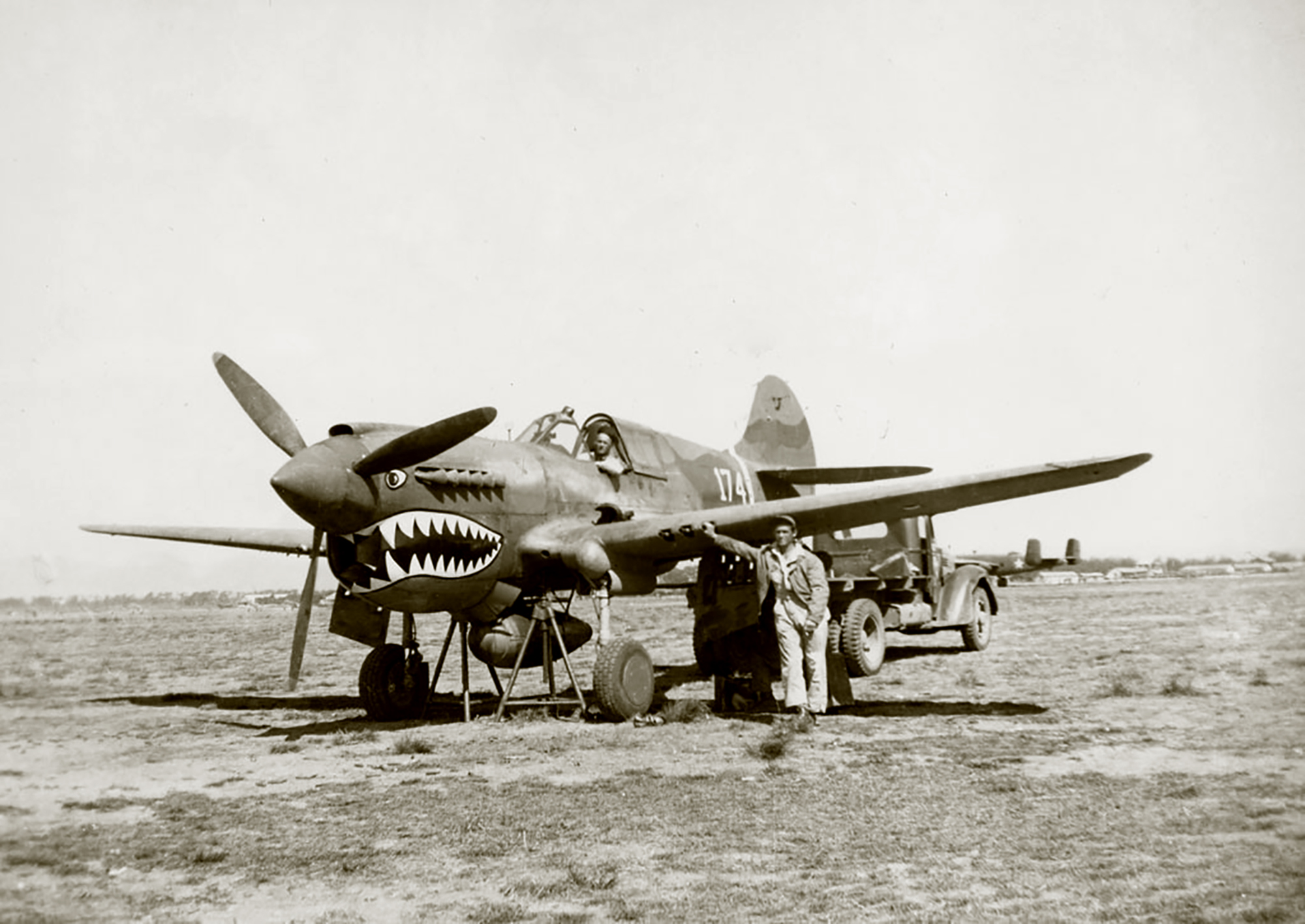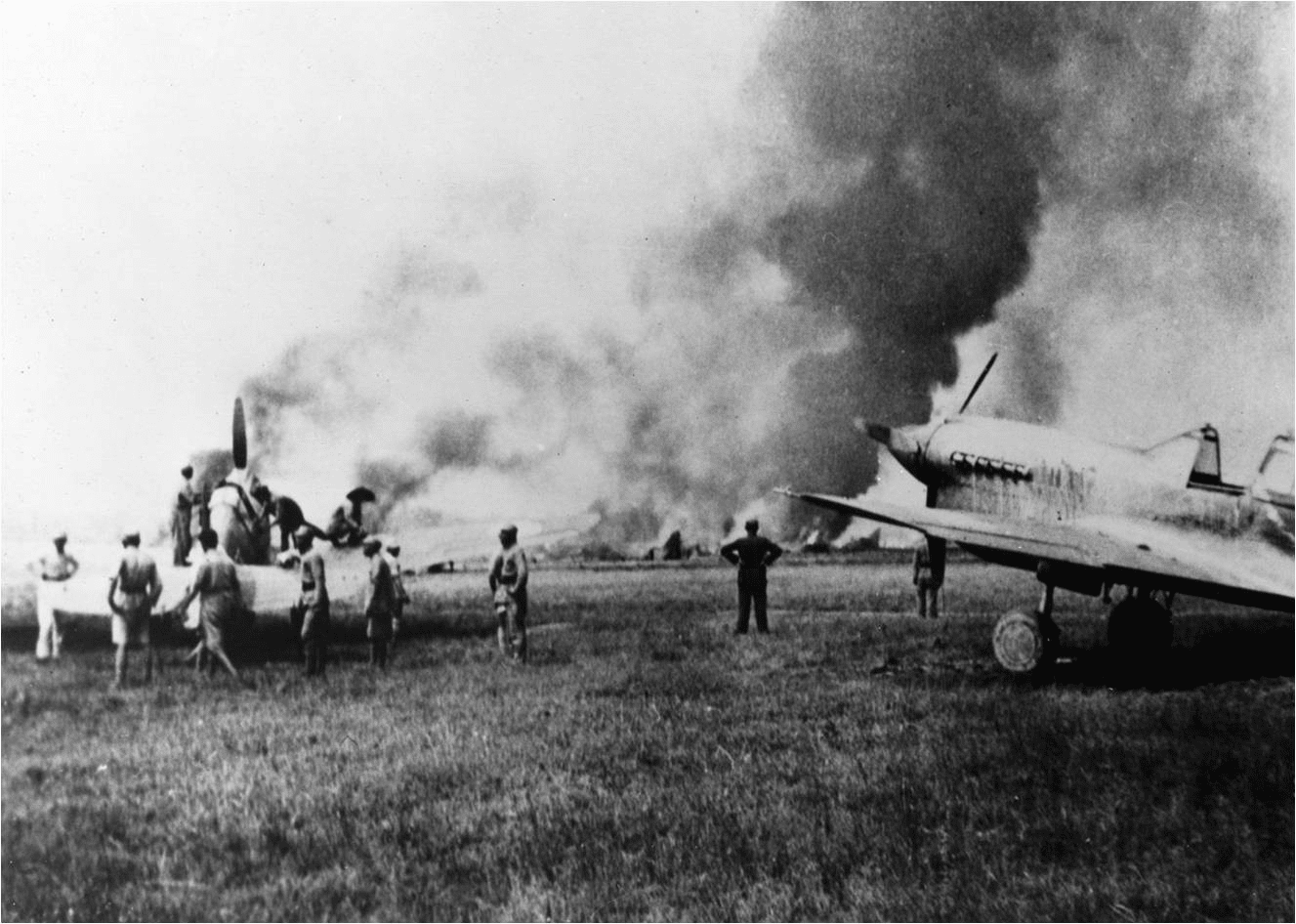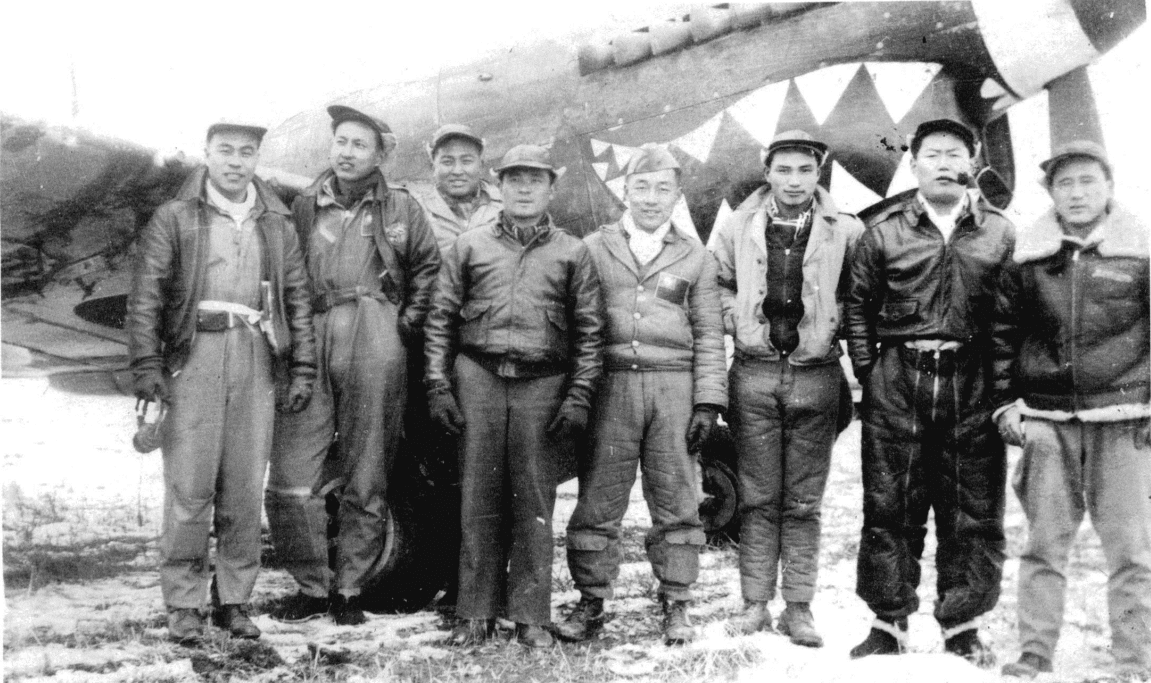Curtiss P-40K
In 1942, American P-40Ks arrived in the CBI theater of operations, and would be flown jointly by American and Chinese pilots in the Chinese-American Composite Wing starting from 1943. They would supplant earlier deliveries of P-40E as well as the older P-40B/C (Hawk 81A-2/3) used by the “Flying Tigers”.

A P-40K of the 75th FS, 23rd FG in China, 1943.
OVERVIEW
The P-40K is essentially an up-engined P-40E/F. By and large, there are no significant changes to its performance or abilities aside from those derived from the more powerful engine. It would potentially be at battle rating 3.0 as a consequence, but would ultimately fly just like any other P-40.
IMAGES
I have not found any images of CAF P-40Ks or CACW P-40Ks, only non-Chinese 14th AF P-40Ks or CACW P-40s of unknown model. It is known that Chinese-operated aircraft were painted with Republic of China roundels.

Aftermath of an attack on Liang-shan base, 1943. 4th Group CACW.

Pilots of 28th Squadron, 3rd Group CACW.
HISTORY
The P-40K was supposed to be the last P-40 before the production of the more advanced P-60 fighter occurred. A Lend-Lease order of 600 was already ordered in October 1941, but the failure of the P-60 project would lead to the order being more than doubled to 1300. The order would be split as follows: 600 P-40K-1 CU, 200 P-40K-5 CUs, 355 P-40K-10 CUs, and 165 P-40K-15 CUs.
The primary difference between the P-40K and the P-40E and F would be the introduction of a new Allison V-1710-73 engine, delivering 1325 hp on takeoff. The earlier models of the P-40K (K-1 and K-5) would use the older P-40E airframe. However, the increased engine problem led to some stability issues, resulting in a small dorsal fin being added ahead of the tail. This was not entirely successful, and as such, later production K-models (K-10 and K-15) use the longer P-40F airframe.
It was intended that China receive some 200 P-40Ks out of a total of 1,226. However, this order would not be fulfilled. Instead, only 337 P-40s in total, of which 330 would be received, were actually sent to the Republic of China Air Force, with 25 P-40Ks in that mix, most likely from mid-1942 onward. It is not clear exactly which model of P-40K was delivered nor exactly which units they operated in, but it is known that Chinese units, Chinese-American units, and American units were all operating in China using the P-40K from late 1942 into 1943.
Its service with American units in the China Air Task Force, later the 14th Air Force, is reasonably well-documented. Its service in the joint Chinese-American Composite Wing (also under the 14th AF) is not as clearly documented (i.e. the specific model is usually not recorded) but it is known to have served with them. The few that served in the ROCAF have virtually no documentation whatsoever.
The P-40s were later replaced by P-51 Mustangs near the end of WWII.
STATISTICS
P-40K
Crew
1 Pilot
Dimensions
Length 9.65/10.16 m | Wingspan 11.38 m | Height 3.76 m
Wing Surface Area 21.92 m2
Empty Weight 2908 kg | Full Weight 3814 kg
Powerplant
1x V-1710-73 V-12 liquid-cooled engine
1325 hp
Performance
Sea Level unknown km/h | 6100 m 582 km/h | Landing unknown km/h
Rate of Climb 10.2 m/s
Service Ceiling 8784 m
Fuel 594 L (643.5 L drop tank) | Range 1125 km (2572 km w/ drop tank)
Armor
38 mm bulletproof glass
9.5 mm steel behind instrument panel
8 mm steel behind pilot
Armament
6x M2 Browning (1686 rounds)
SOURCES
A History of Chinese Aviation: Encyclopedia of Aircraft and Aviation in China until 1949
The Curtiss P-40 from 1939 to 1945
P-40 Warhawk. Part 2